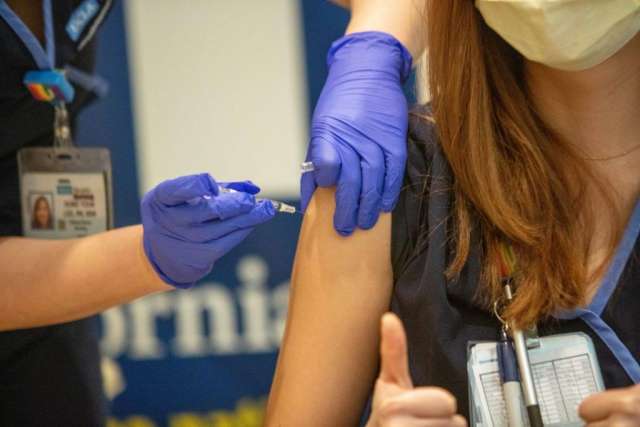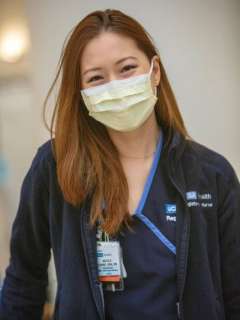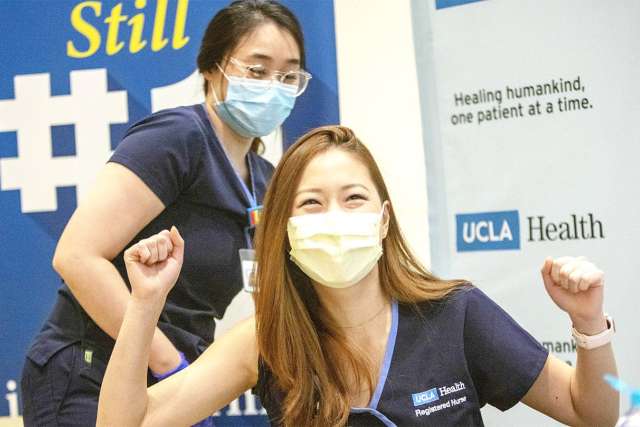After nearly 10 months of working with COVID-19 patients at UCLA Santa Monica Medical Center, Nicole Chang, RN, could hardly wait to be vaccinated against the disease.
Chang was bubbling with excitement to be among the first to receive the Pfizer vaccine when UCLA Health began distributing it to frontline health care workers Dec. 16.
“It’s just been a really long year for everybody and I think this is an opportunity for us to heal together and finally get back on track to normalcy,” she said. “I miss seeing people smile! I miss seeing people’s faces. I miss hugging my grandma. Those are all motivating factors as to why I want to get this vaccine.”
About 480 health care workers from UCLA Health received the first dose of the two-part Pfizer vaccine on the first day of distribution in a room dotted with mylar balloons and pervaded by joyous, grateful energy.
Chang said reading the data about the vaccine and hearing scientific experts’ thoughts on it gave her full confidence in taking it.
“I have complete faith in all of this,” she said. “I have no anxieties about it whatsoever.”

The vaccine from Pfizer and BioNTech — the first to receive emergency use authorization from the U.S. Food and Drug Administration — is part of a nationwide immunization effort that many hope represents the beginning of the end of a global pandemic that has caused widespread illness, death, economic strife and social upheaval. The vaccine requires two doses given 21 days apart for full efficacy.
A second vaccine, from drugmaker Moderna, received emergency use authorization from the FDA on Dec. 18. It also requires two doses. Several other vaccine candidates are undergoing clinical trials in the U.S.

Chang said the past year — and particularly the past month with the surge in coronavirus cases — has been heart-wrenching and personally taxing. She relies on a strong camaraderie among her colleagues to get her through each day.
“If it weren’t for them, I would not have been able to survive like this,” she said.
The arrival of the vaccine and its availability for frontline workers has provided a much-needed dose of optimism, she said, adding that she hopes that by doctors and nurses taking the vaccine, the public will be inspired to do the same.
“I just feel hopeful and optimistic and really feel like there’s a light at the end of the tunnel,” she said on Dec. 16. “But it’s not going to be just the people who are here today who are going to get the vaccination that’s going to stop this. It has to be everybody, you know?”
The slight pinch of the vaccine is nothing compared to the trauma of COVID-19, she said: “I’ve seen the devastation it causes.”
Besides, Chang reported that the vaccine injection didn’t hurt a bit. It was as quick and easy as a flu shot. The only side effect she experienced was a feeling of giddiness that she will soon have some protection from the disease.
“It hurt less than a normal flu shot,” she said. “It might have been the adrenaline.”



